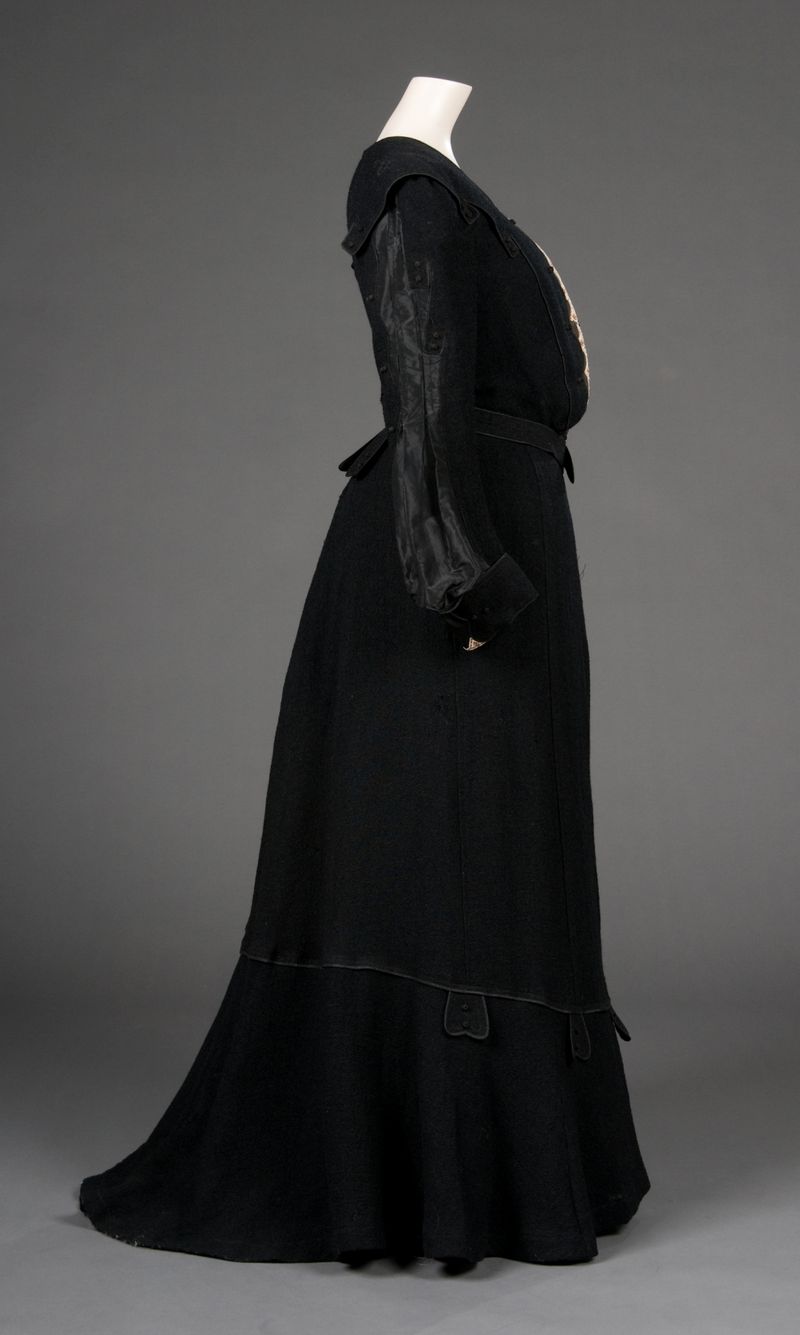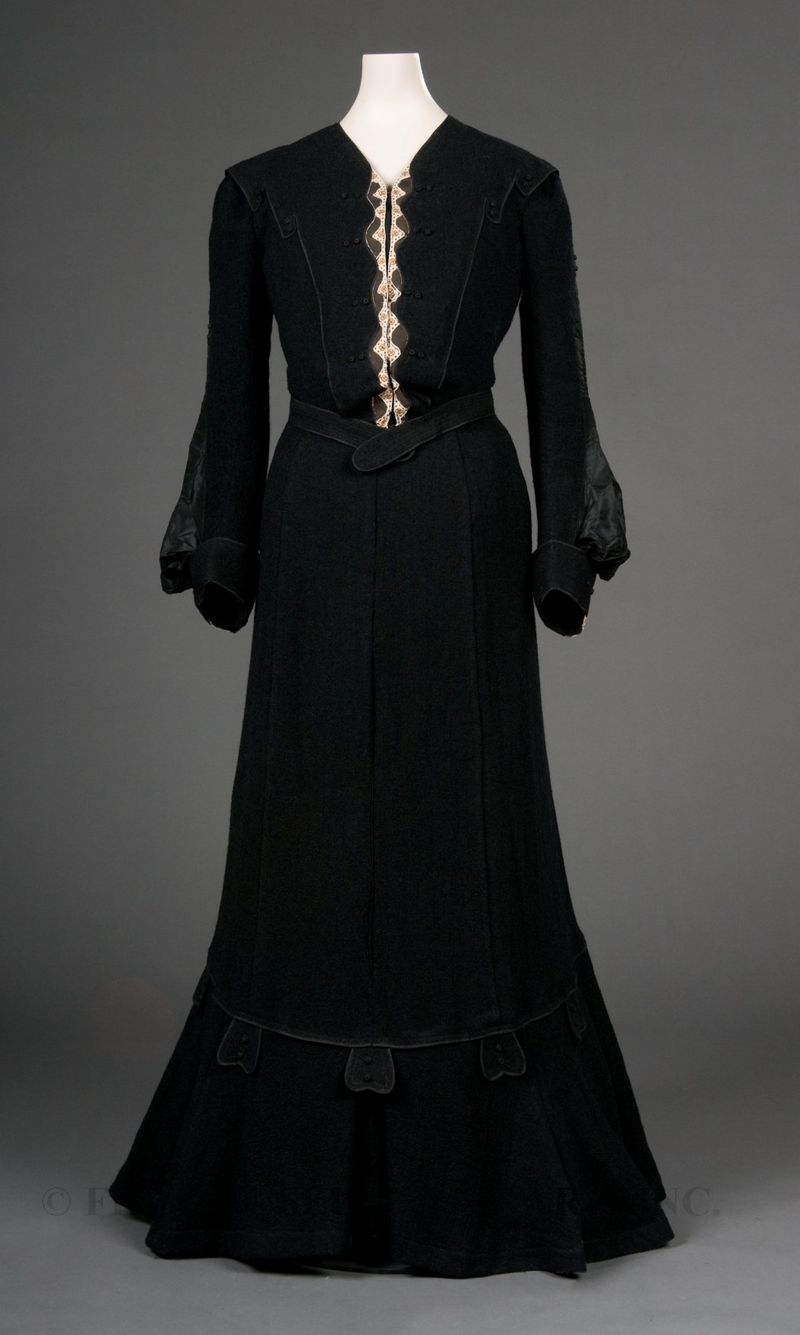The S-bend silhouette emerged about 1900 and reigned supreme until the end of the decade. Created by a specific style of corset, the S-bend is characterized by a rounded, forward leaning torso with hips pushed back. This shape earned the silhouette its name; in profile, it looks similar to a tilted S. The corset itself had a flat, straight front and and started low on the bustline, unlike late 19th century corsets which supported the bust and pushed in the waist. To create the desired full, rounded and unarticulated bustline, many women wore bust improvers or padded corset covers. The resulting silhouette is sometimes referred to as the pouter pigeon, as it resembled the puffed chest of a pouter pigeon. When viewed in profile, the full bust was balanced by gathers at the back of the skirt and sometimes a slight train.
 Day dress
Day dress
Wool crepe/silk taffeta
1902-04
Gift of Helen Sponsel
S2007.910.7A-C
The S-bend reached the height of popularity in about 1904-05. Fashion illustrations and advertisements of the period portray an impossibly forward leaning silhouette. Most women probably adopted a more modest version of the S-bend, as seen in the image above. The separate bodice of the dress is bloused at the waistband, working in conjunction with the corset to create the desired silhouette. Even the bloused silhouette of the bishop sleeves (popular during the 1910s) echos the overall S-bend silhouette. The S-bend was worn for day and evening, though evening bodices were cut much lower than day bodices. This 1909 John Singer Sargent portrait of Lady Astor portrays an evening version of the S-bend silhouette, with both the front and back of the bodice cut low.
The vertical panels of the gored skirt, the black-on-black bodice piping and the inserted white decorative panels on the bodice create the impression of length and height. According to a 1903 article in Harper's Bazaar, "on all the gowns, long lines are still preferred" and the fashionable figure is "long and slender."1 Complementing and maintaining the vertical emphasis were the upswept, off-the-neck hairstyles favored by women during this period. The curved S-bend silhouette and the vertical emphasis were influenced by Art Nouveau, which favored narrow, sinuous lines derived from natural forms.
Though black is often associated with mourning, by the early years of the 20th century, strictures regarding mourning dress were beginning to loosen. In 1904, one fashion commentator voiced her confusion over mourning dress, declaring that mourning dress is "changing so all the time…it is a very difficult matter to know just how to dress when obliged to put on mourning for any near relative."2 The fabric used in the dress pictured here is black crepe, a fabric often used for deep mourning. By 1903-04, however, black was becoming a fashionable color, worn for style and for mourning. Black day dresses accented with small touches of colored trim on the bodice were fashionable for day wear. Black accented with white was particularly fashionable, and could also be worn for late-stage mourning. The primary concern was ensuring that mourning dress was not "too handsome…or too much trimmed."3 Though we don't know the circumstances in which our black crepe particular dress was worn, with its touch of white trim on the bodice and cuffs, it would have been appropriate for late stage mourning or fashionable day dress.
1 "Morning and Afternoon Gowns." Harper's Bazaar June 1903: 554.
2 "Mourning Fashions." Harper's Bazaar May 1904: 502.
3 Ibid.



